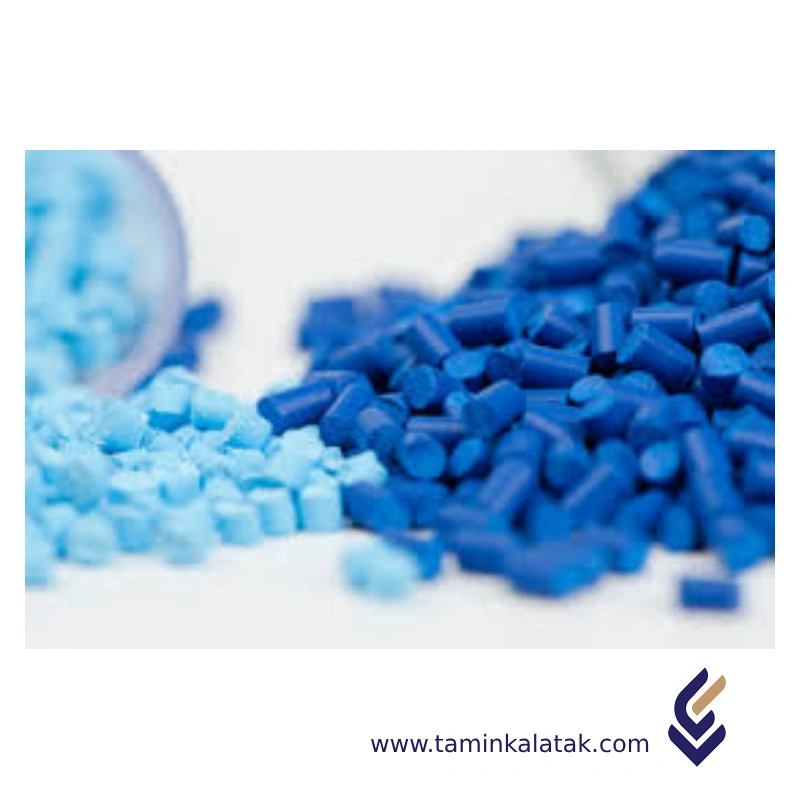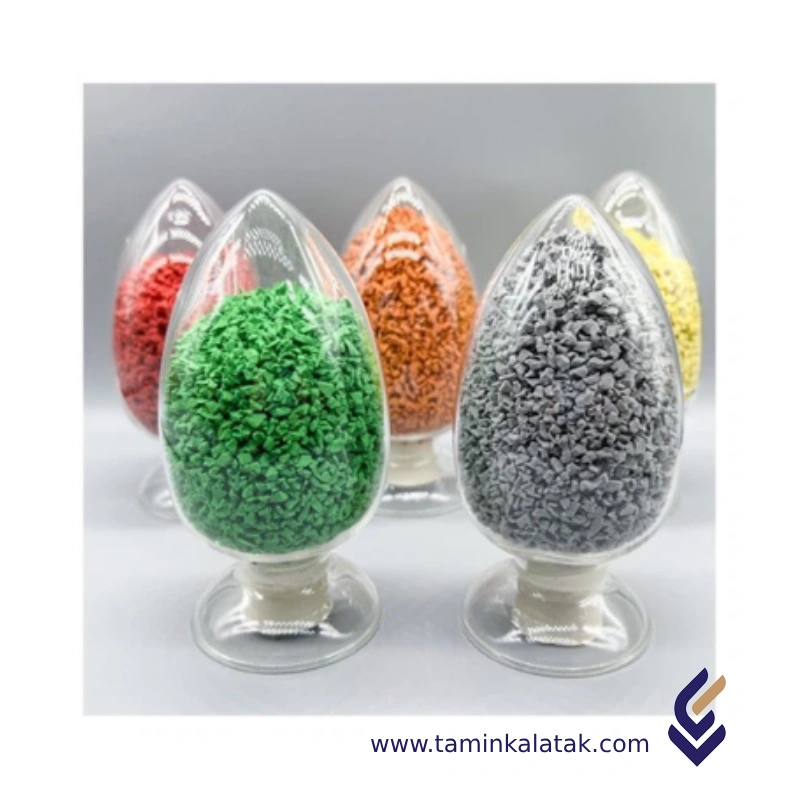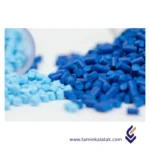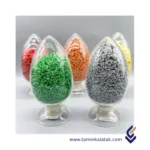Polymers are made up of very large molecules made up of many repeating units called monomers, which ultimately form this long polymer chain
A thermoplastic is a type of plastic polymer that becomes moldable or flexible at a certain temperature and solidifies upon cooling. This property allows it to be repeatedly softened by heating and hardened by cooling without significant chemical change.
Engineering ThermoPlastic Vulcanizates (ETPV)
Engineering Thermoplastic Vulcanizates (ETPV) are a class of advanced thermoplastic elastomers (TPEs) that combine the properties of thermoplastics with the resilience of vulcanized rubber. They are formed by dynamically crosslinking an elastomer phase (such as EPDM or NBR) within a thermoplastic matrix (such as polyamide, PBT, or other engineering plastics).
Structure
The structure of Engineering Thermoplastic Vulcanizates (ETPV) consists of a finely dispersed, dynamically crosslinked elastomer phase embedded within a continuous thermoplastic matrix. The elastomer phase, typically made of materials such as EPDM (ethylene propylene diene monomer) or NBR (nitrile butadiene rubber), undergoes vulcanization during melt processing, forming a stable rubber network. This crosslinked rubber phase provides ETPVs with high elasticity, resilience, and excellent mechanical properties. The thermoplastic matrix, often composed of engineering polymers like polyamide (PA), polybutylene terephthalate (PBT), or polyphenylene sulfide (PPS), serves as the continuous phase, giving the material its thermoplastic processability and structural integrity. The intimate interaction between the rubber and thermoplastic phases results in a material that exhibits both the flexibility of elastomers and the durability of engineering plastics. This unique microstructure allows ETPVs to retain their shape after deformation while also being reprocessable and recyclable like conventional thermoplastics.
Properties
Engineering Thermoplastic Vulcanizates (ETPV) exhibit a unique combination of properties that make them highly versatile for demanding applications. They possess excellent elasticity and flexibility due to their dynamically crosslinked elastomer phase, while the thermoplastic matrix provides high mechanical strength, dimensional stability, and ease of processing. ETPVs offer superior resistance to heat, chemicals, and oils compared to conventional thermoplastic elastomers, making them suitable for high-performance environments such as automotive and industrial applications. They also demonstrate excellent wear and fatigue resistance, ensuring long-term durability under dynamic loading conditions. Unlike traditional rubber materials, ETPVs can be processed using standard thermoplastic techniques like injection molding and extrusion, which enhances manufacturing efficiency. Additionally, they maintain their mechanical integrity across a wide temperature range, making them ideal for applications requiring both flexibility and structural robustness. Their recyclable nature further adds to their sustainability, making them a preferred choice for industries seeking high-performance, cost-effective, and eco-friendly material solutions.
Applications OF ETPV
- Automotive Industry: Seals, gaskets, hoses, under-the-hood components, and weatherstrips.
- Electrical & Electronics: Wire insulation, connectors, and high-performance enclosures.
- Industrial Machinery: Flexible couplings, conveyor belts, vibration dampeners, and seals.
- Medical Devices: Tubing, grips, and sterilizable components.
- Consumer Goods: Sports equipment, handles, and soft-touch applications.
Advantages of ETPV
High-temperature resistance – Withstands elevated temperatures better than conventional TPVs.
Excellent chemical and oil resistance – Suitable for harsh environments.
Superior mechanical properties – High strength, durability, and wear resistance.
Elasticity and flexibility – Offers rubber-like performance with thermoplastic processability.
Easy processing – Can be injection molded, extruded, or thermoformed like standard thermoplastics.
Lightweight and recyclable – Environmentally friendly and sustainable alternative to vulcanized rubber.
Disadvantages of ETPV
Higher material cost – More expensive compared to standard TPVs and traditional rubbers.
Lower flexibility than fully vulcanized rubber – May not be suitable for extreme elasticity needs.
Limited performance in extremely high-stress environments – May not replace high-end elastomers in all applications.
Applications
| Applications | , , |
|---|
Engineering ThermoPlastic Vulcanizates (ETPV)
| Products | MFI(g/10 min) | Density (g/cm3) | Process Method | Applications | Data Sheet | MSDS |
|---|---|---|---|---|---|---|
| ETPV | 0.5 to 30( depends on its formulation) | 0.85 to 1.2 | Injection Molding Extrusion Blow Molding Thermoforming | Seals, gaskets, weatherstrips,Soft-touch grips, handles,Tubing, seals,Wire and cable insulation, connectors Conveyor belts, hoses |










